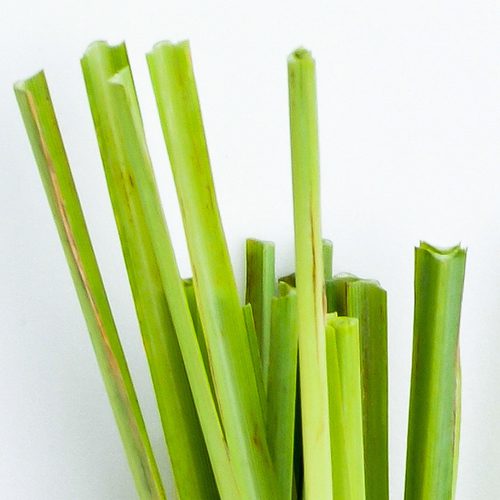Lemongrass
Latin name: Cymbopogon citratus
🌱 Days to Sprout: 10-21
😋 Ready for Full Dose of plant food with roots .5-inch long
✂️ Thin to: 3 plants per yCube
🍅 Days to Maturity: 100
💡 Light Zone: Low
📏 Plant Size: 2 ft
💚 Care Level: Intermediate
Origin
Lemongrass is native to Africa, Asia, and Oceania where it has been used as a traditional herbal medicine. A member of the grass family, many people treat Lemongrass like an herb when it comes to culinary uses.
Qualities
Lemongrass consists of stalks and leaves that grow in clusters. The leaves have a narrow, coarse blade with a lanceolate shape while the stalks have a tough, gree, woody outer layer. You can remove the tightly wrapped outer layers to reveal the central portion of the stalk which has a white to pale yellow color. Young Lemongrass will release a sweet, somewhat tropical citrus aroma, and the stalk will have a tender and crisp consistency.
Use
Lemongrass is a traditional flavoring in teas and soups as it imparts a lemony flavor without adding tartness. It can be brewed fresh or dried as a medicinal tea sought for its anti-anxiety, anti-fungal, stimulant, antioxidant, and anti-inflammatory properties. Lemongrass pairs particularly well with ginger, chicken, and seafood.
Care & Harvest
🌱 Germination: Lemongrass can be slow to germinate and take off in growth, but be patient - it’s worth the wait!
💡Temperature: As a tropical plant, lemongrass prefers warmer temperatures (70°F+).
✂️ Pruning: Check the roots monthly and trim any that are brown or extending past the yPod. As lemongrass matures, you may see outer leaves start to brown as the plant puts more energy into new growth - simply trim the brown leaves away.
🔎 Plant Health: Spider mites are a common pest, but you can use our prevention tricks to keep them at bay!
🌾 Harvest: When harvesting Lemongrass for culinary use, target the bottom of the stalk for the most edible, tender, and fragrant part of the plant. Find stalks that are at least 1/4” thick and cut or snap off the stalk close to the yCube. Remove any foliage and woody parts to reveal the inner, tender section. Leaves can be harvested and dried anytime by snipping from the outside of the plant and hanging them to dry.
Harvest To Plate Recipe
Vietnamese Lemongrass Chicken
Ingredients
1/4 cup lime juice, plus extra lime wedges for serving
3 tablespoons fish sauce
2 tablespoons maple syrup (or brown sugar)
2 tablespoons avocado oil (or any neutral-flavored oil)
1 tablespoon low-sodium soy sauce
4 small garlic cloves
2 stalks lemongrass, tender white parts only, roughly chopped (see below)
1 medium shallot, peeled and halved (or half of a small red onion)
2 pounds boneless chicken breasts or thighs, cut into 1-inch pieces
Instructions
Combine the lime juice, fish sauce, maple syrup, oil, soy sauce, black pepper, garlic, lemongrass and shallot in a blender or food processor. Puree until smooth.
Combine the chicken and marinade in a large bowl. Toss until the chicken is evenly coated. Cover the bowl and let the chicken marinate for 30 minutes.
Preheat the grill to medium-high heat. (If using wooden skewers, soak them in water for 15 minutes before using.) Thread the chicken evenly onto the skewers.
Once the grill is hot, place the chicken kabobs evenly on the grill. Cook for 10-14 minutes, turning once halfway through, until the chicken is golden brown and cooked through (no longer pink on the inside).
Transfer the kabobs to a clean plate, and loosely tent with aluminum foil. Let the chicken rest for at least 5-10 minutes.
Then serve warm while the chicken is hot and juicy, sprinkled with an extra squeeze of fresh lime juice (plus some thinly-sliced green onions) if desired. Or, refrigerate in a sealed container for up to 3 days, or freeze for up to 3 months.
Our Plant Health & Nutrition Team thoroughly tests each variety we offer to bring you the most flavorful and high-quality plants. We regularly rotate our plant portfolio, so please note, availability varies.

